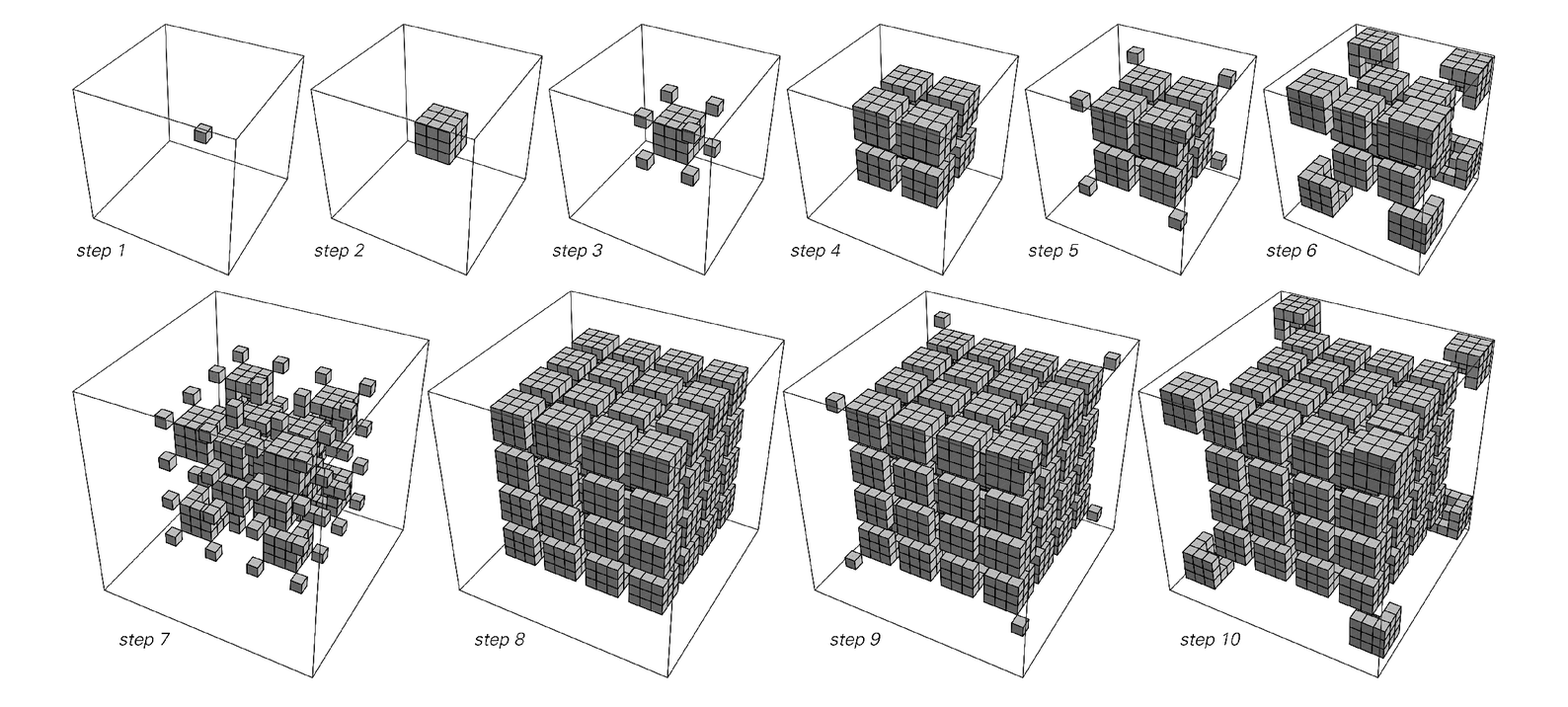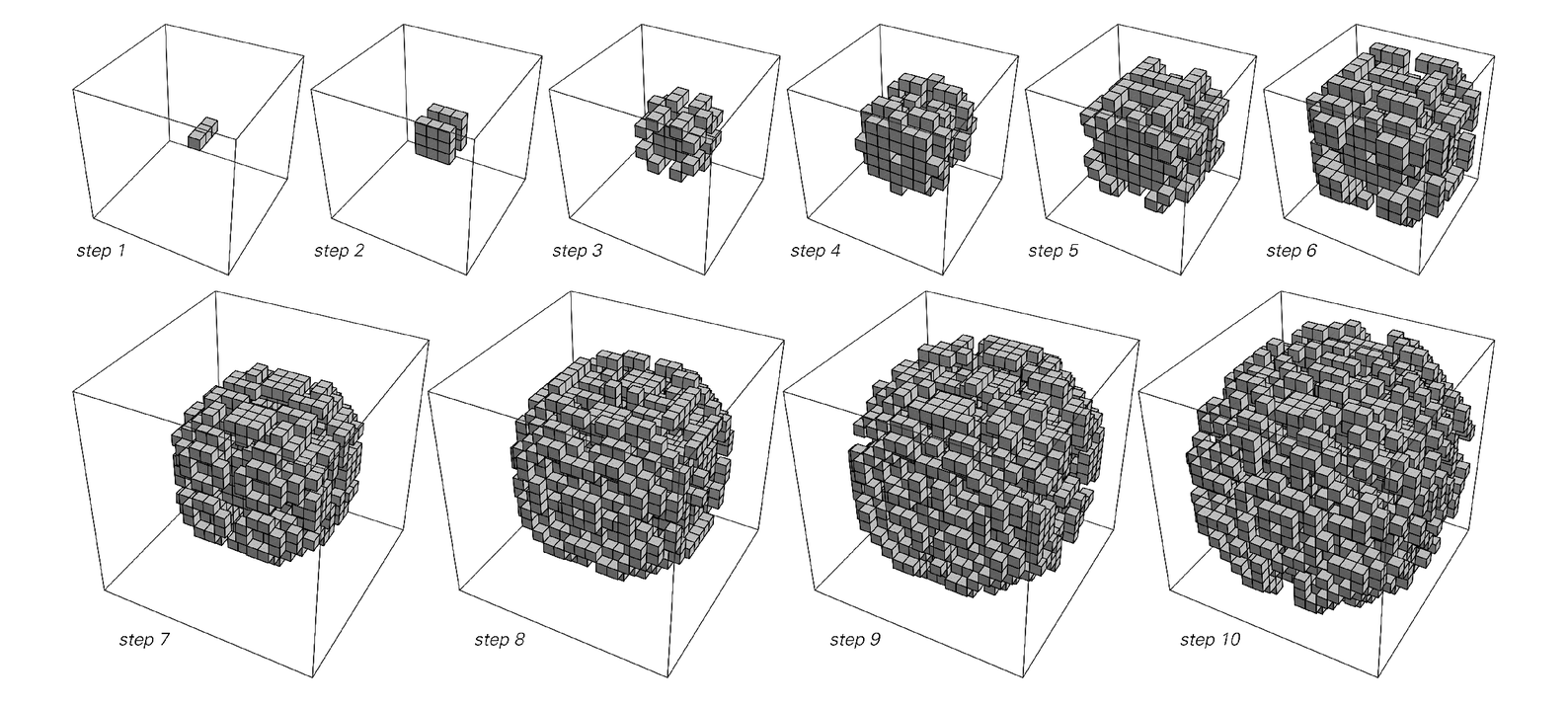


Further examples of three-dimensional cellular automata, but now with rules that depend on all 26 neighbors that share either a face or a corner with a particular cell. In the top pictures, the rule specifies that a cell should become black when exactly one of its 26 neighbors was black on the step before. In the bottom pictures, the rule specifies that a cell should become black only when exactly two of its 26 neighbors were black on the step before. In the top pictures, the initial condition contains a single black cell; in the bottom pictures, it contains a line of three black cells.